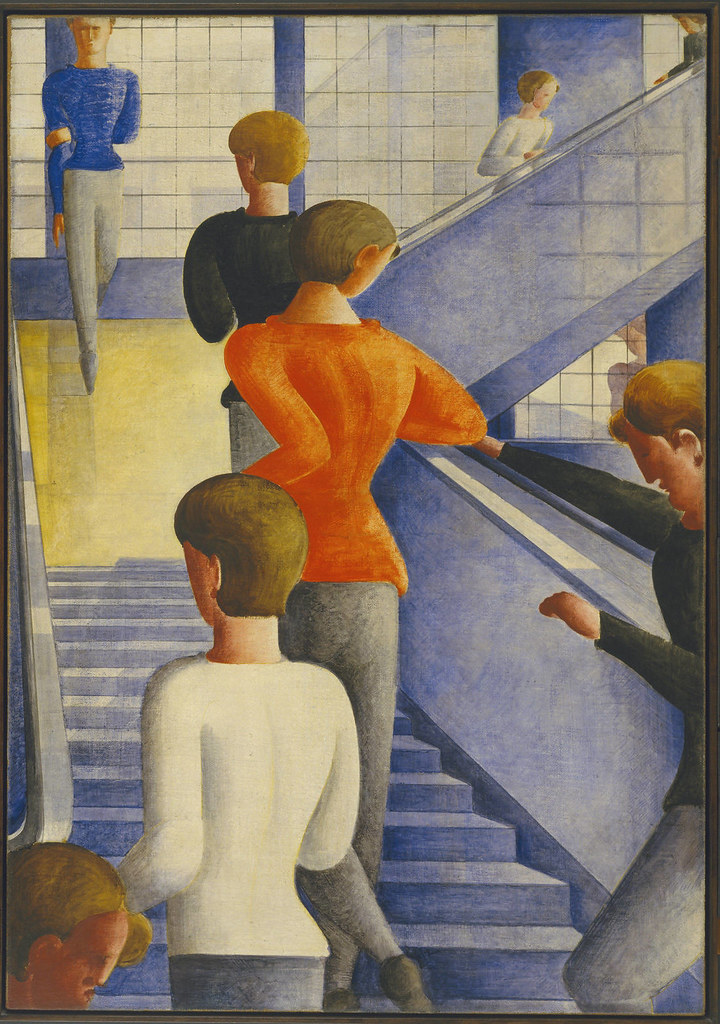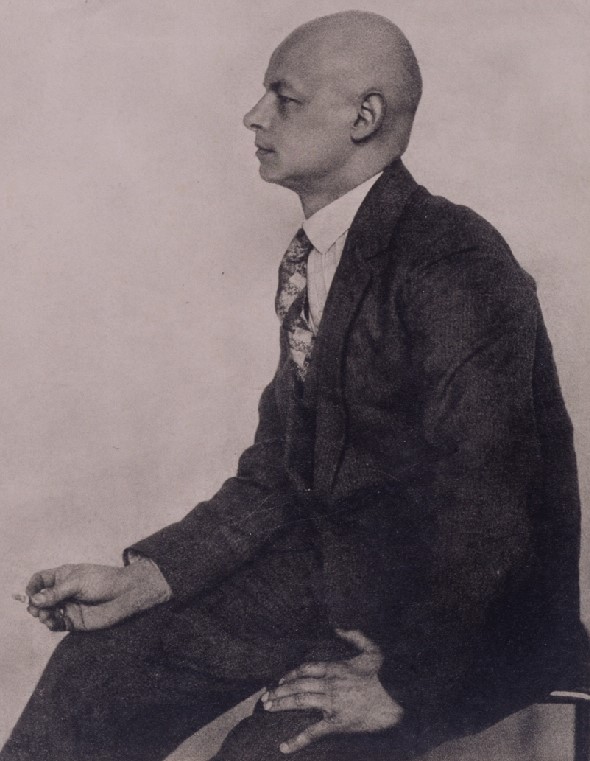Oskar Schlemmer, born on September 4, 1888, and passing away on April 13, 1943, was a multifaceted German artist. He excelled as a painter, sculptor, designer, and choreographer, and was closely affiliated with the Bauhaus school.
In 1923, Schlemmer took on the role of Master of Form at the Bauhaus theatre workshop, following his work in the sculpture department. He gained widespread recognition for his groundbreaking piece, the “Triadisches Ballett” (Triadic Ballet). In this work, he transformed actors in costumes into geometric representations of the human form, creating what he termed a “celebration of form and color.”
Ten interesting facts about Oskar Schlemmer:
Multidisciplinary Artist

Schlemmer’s versatility extended beyond painting to include sculpture, design, and choreography. This multidisciplinary approach allowed him to explore art from various angles, making him a unique figure in the art world.
Bauhaus Association
Schlemmer joined the Bauhaus school in 1920, a revolutionary institution that aimed to integrate art, design, and technology. His work at Bauhaus significantly influenced modern art and architecture, and he himself was deeply influenced by the school’s interdisciplinary ethos.
Master of Form
When Schlemmer was hired as the Master of Form at the Bauhaus theatre workshop in 1923, he had the opportunity to blend visual arts with performance. This role allowed him to experiment with space, form, and human movement in a theatrical setting.
Triadic Ballet
His “Triadisches Ballett” is a seminal work in the history of performance art. It broke away from traditional ballet by using abstract forms and geometric shapes, challenging conventional representations of the human body.
Human Form Exploration
Schlemmer was captivated by the human form and its spatial relationships. He even developed a course at Bauhaus called “Der Mensch” (The Human Being) to study this. His work often depicted stylized, almost mechanical human figures.
Bauhaus Emblem
Schlemmer’s design for the Bauhaus emblem in 1922 became an iconic representation of the movement. The emblem encapsulates the Bauhaus philosophy of form following function.
Bauhaus Stairway
This painting is not just a visual masterpiece but also a representation of the Bauhaus ethos. It captures the essence of the school and its impact on modernism, making it one of his most celebrated works.
Political Climate
Schlemmer left Bauhaus in 1929 due to the changing political landscape in Germany. The appointment of Marxist architect Hannes Meyer as the successor to Walter Gropius led to an ideological shift that Schlemmer couldn’t align with.
Life Under the Third Reich
Schlemmer faced persecution under the Nazi regime, which labeled his work as “degenerate art.” However, he found a way to continue his artistic pursuits by working at the Institut für Malstoffe in Wuppertal during World War II.
Last Works
His final series of paintings, “Fensterbilder” (Window Pictures), were created during a period of ‘inner emigration’ under the Nazi regime. These works were a departure from his earlier styles, offering a glimpse into his state of mind during those difficult years.
I hope you find these facts about Oskar Schlemmer intriguing!
Tensions with the Nazis
Oskar Schlemmer’s relationship with the Nazis was one of tension and difficulty. After the Nazis came to power, Schlemmer faced increasing pressure and was eventually forced to resign from his professorship at Berlin’s Vereinigte Staatsschulen für freie und angewandete Kunst (United State School for Fine and Applied Art) in 1933. He and his family moved to Eichberg near the Swiss border, and later to Sehringen. His works were included in the infamous Degenerate Art Exhibition in Munich in 1937, a propaganda exhibition organized by the Nazi regime to vilify modern art.
During World War II, Schlemmer found a somewhat safe haven working at the Institut für Malstoffe in Wuppertal, along with other artists like Willi Baumeister and Georg Muche. This position was facilitated by philanthropist Kurt Herbert and allowed Schlemmer to continue his artistic pursuits without immediate fear of persecution. However, the last decade of his life was described as a period of ‘inner emigration,’ a term used to describe a state of internal withdrawal and silence under oppressive regimes.
Schlemmer passed away in 1943 due to a heart attack, but his experience under the Third Reich represents the struggles many artists faced during this dark period in history. The years under Nazi rule were marked by a ‘curtain of silence’ that had descended over him, as noted by Max Bill in his obituary of Schlemmer.
What do you think of the works of Oskar Schlemmer?
Use the form below to say your opinion about Oskar Schlemmer. All opinions are welcome!
